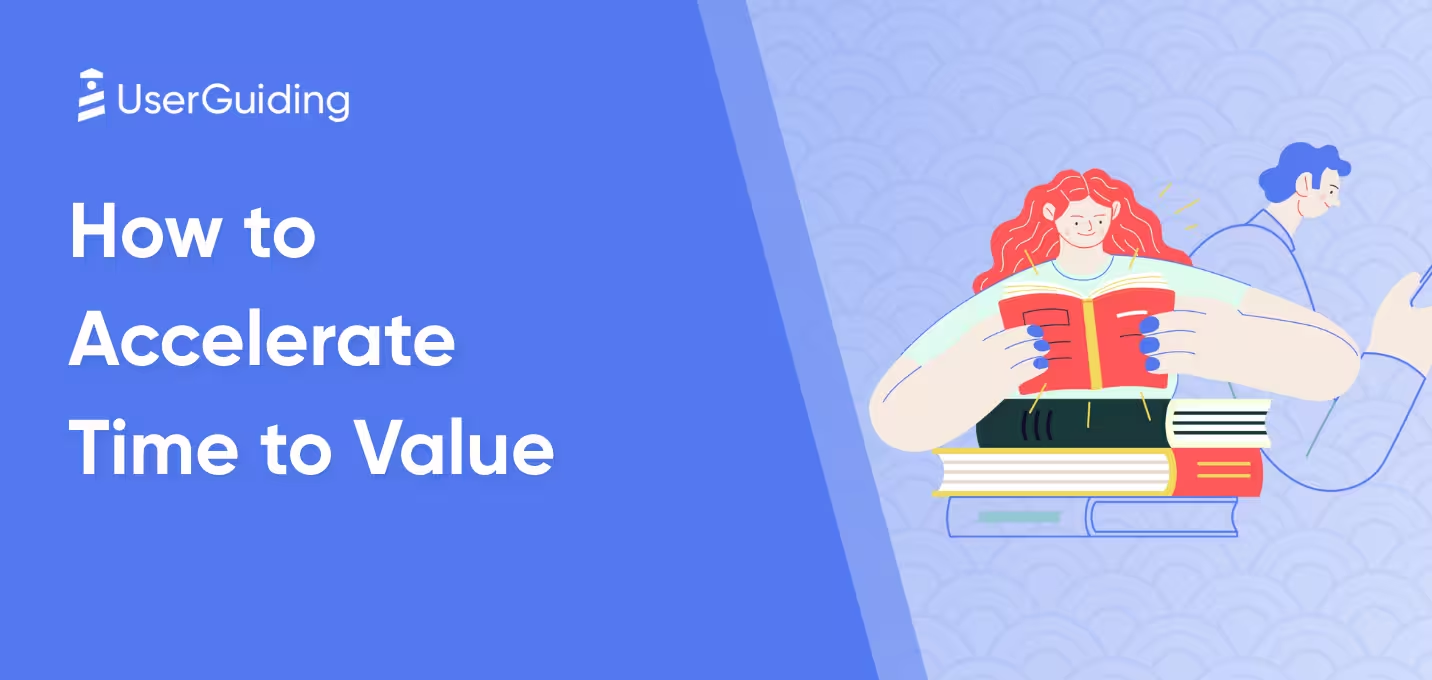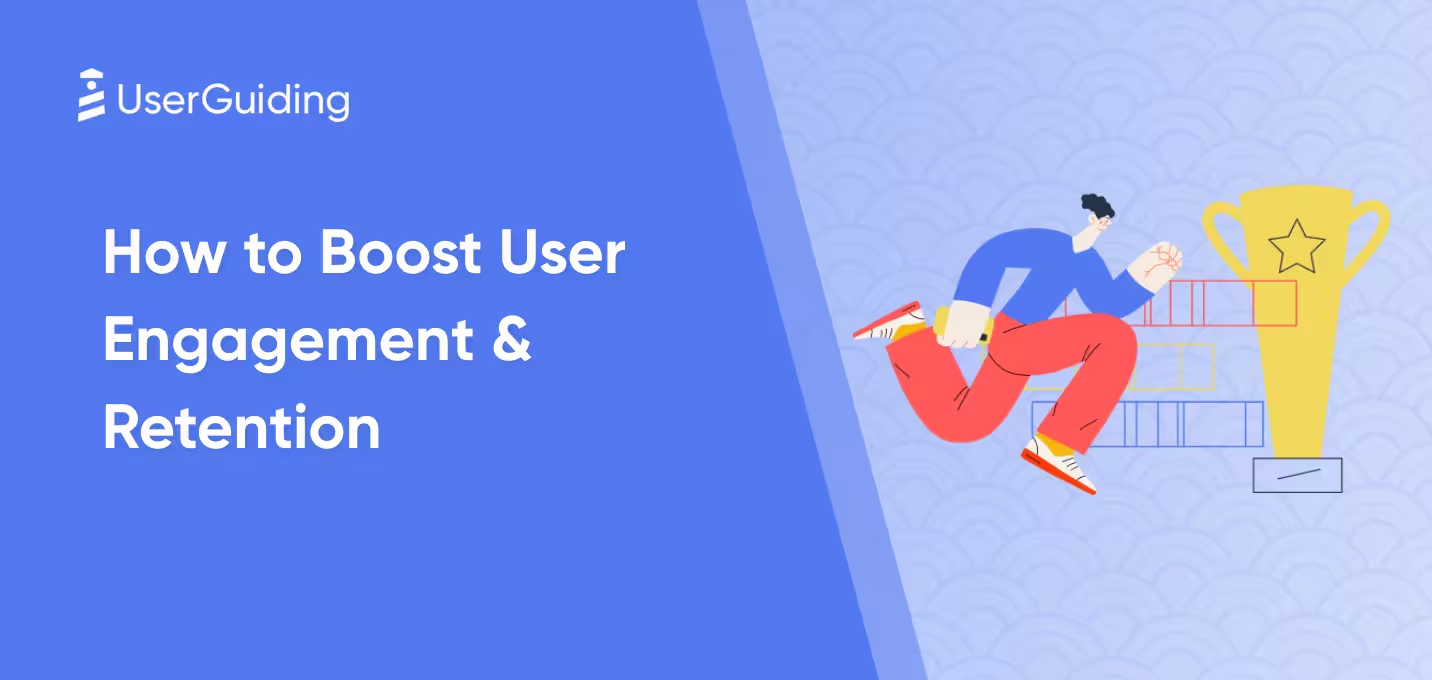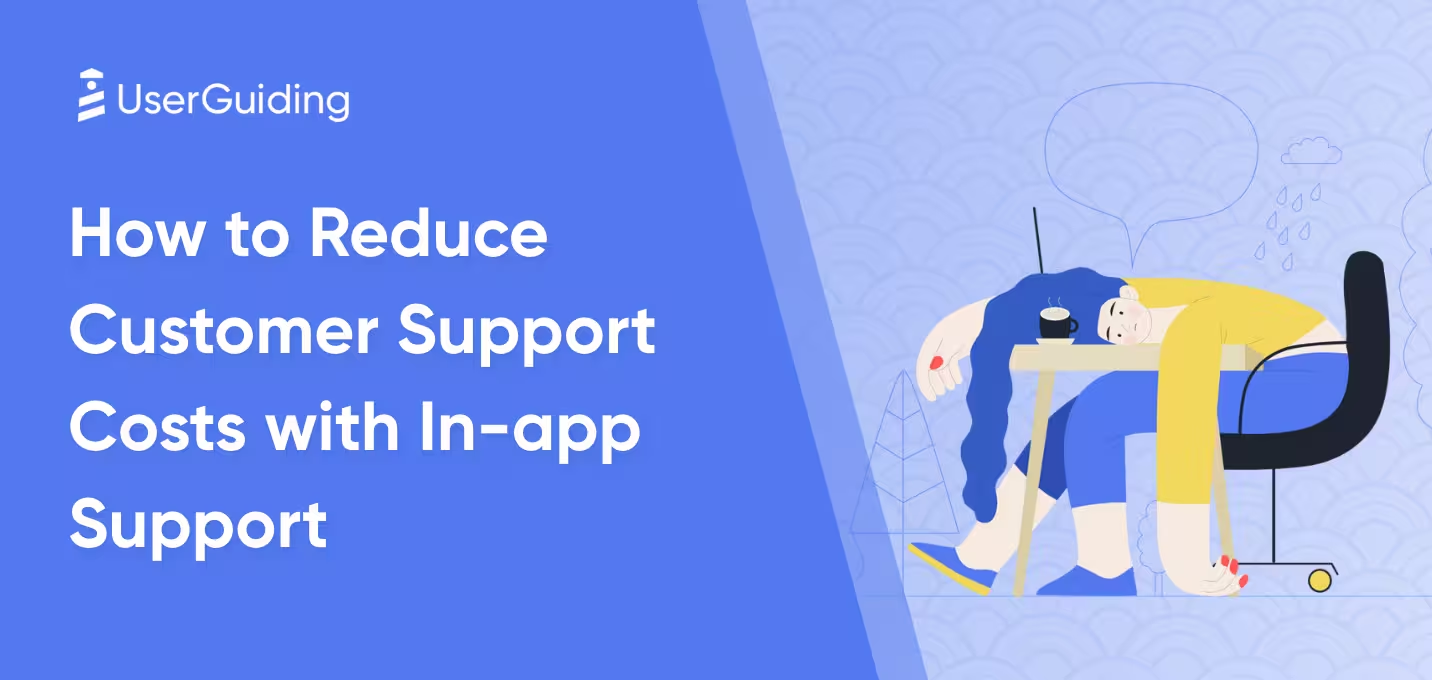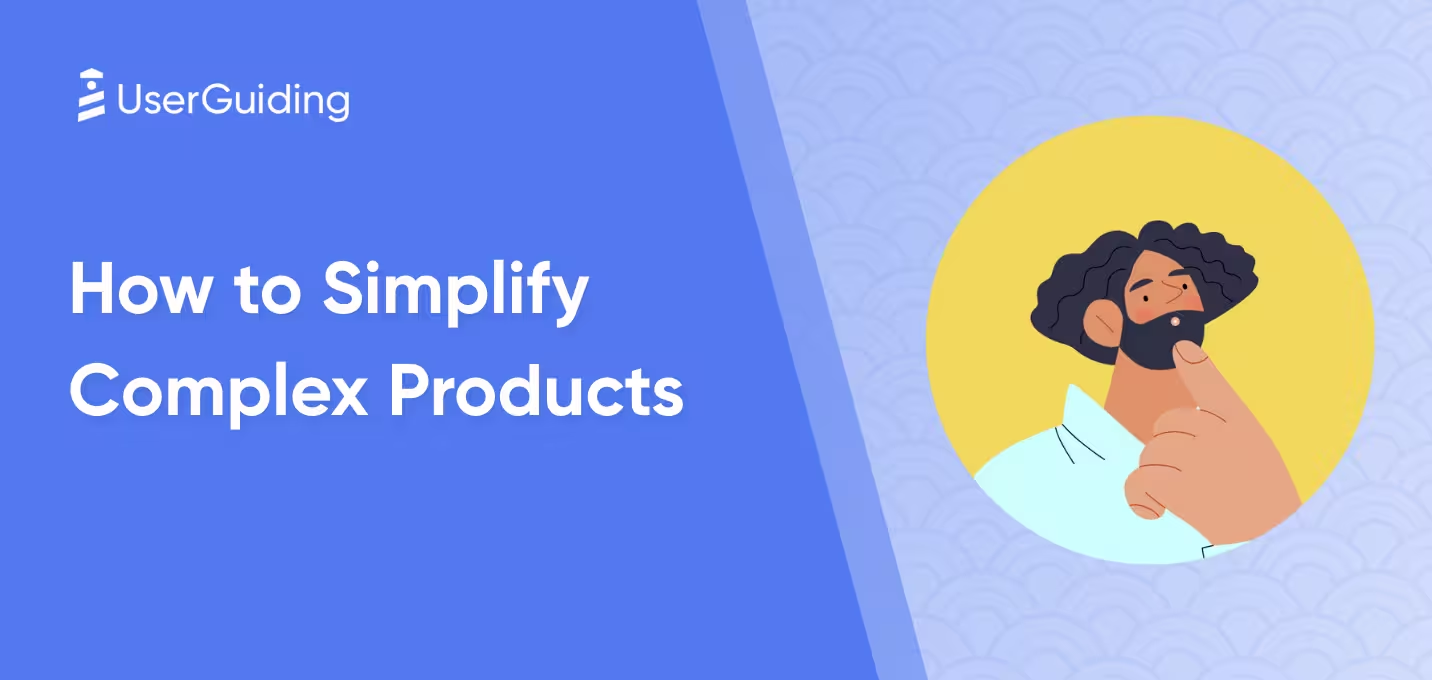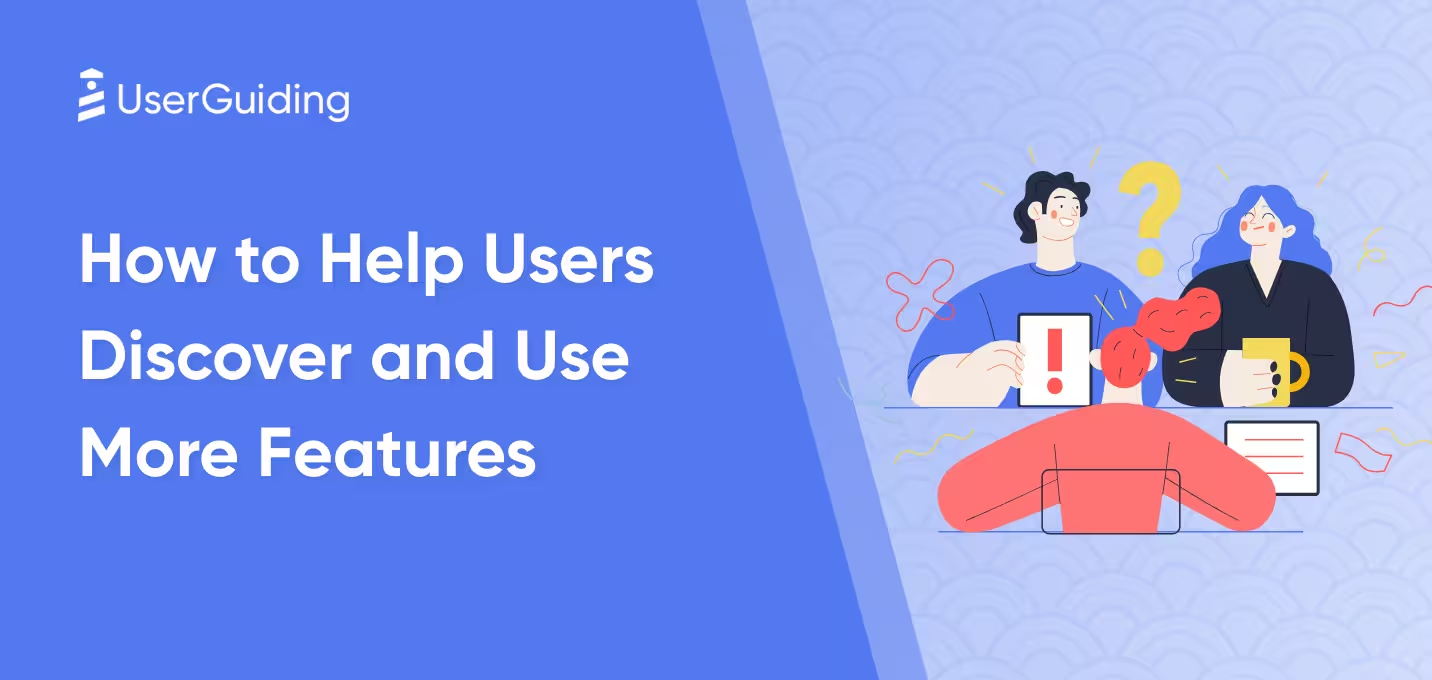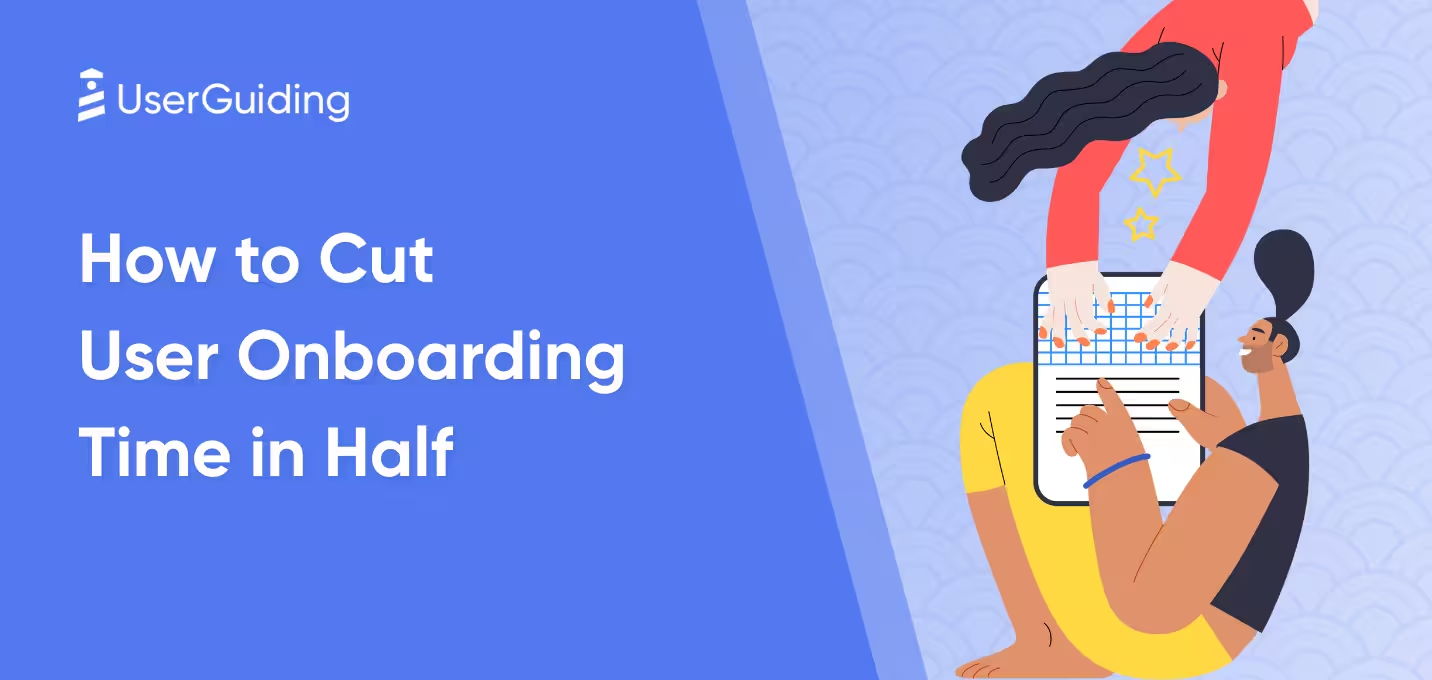

The future of SaaS is uncertain, with new best practices and trends constantly emerging.
AI and ML are set to play a significant role, surely.
However, the specifics remain hazy.
Yet, despite this uncertainty, nearly 90% of companies are focusing on one critical area that’s already making waves and will only grow in importance: real-time personalization.
💡 According to recent research about CX priorities, 88% of organizations prioritize delivering real-time personalization to their customers and users.

Real-time personalization is a game-changing trend that promises to redefine how businesses engage with their customers and enhance the overall user experience.
So, if you're ready to learn more about:
- What real-time personalization is,
- The benefits it brings and how it can boost your business,
- The potential drawbacks and challenges you might face and
- How to implement it effectively,
Then, let’s jump right into the article!
TL;DR
- Real-time personalization is a strategy that delivers tailored content, recommendations, and experiences to users based on their behavior, preferences, and interactions in real time.
- It’s also known as hyper-personalization or dynamic personalization.
- Its purpose is to ensure relevance and provide ongoing value to users.
- It works by gathering user data across various channels and platforms, analyzing user behavior, and predicting potential actions.
- In order to do that, you can utilize Customer Data Platforms (CDP), Customer Engagement Platforms (CEP), or feedback management and centralization systems.
- You can also use customer segmentation and experience personalization tools.
- The most popular real-time personalization examples include:
- Providing a specific path based on user actions and choices
- Triggering a relevant action after user feedback and/or form submission
- Promoting relevant features after incomplete actions
- Offering product and content recommendations
- Applying dynamic pricing
- Benefits of real-time personalization include but not limited to:
- Creating a resonating and meaningful CX
- Ensuring high conversion and retention rates
- Increasing customer engagement and loyalty
- Providing value to customers throughout their journey
- Getting a higher return on investment
- You can implement real-time personalization in 5 steps:
- Step 1: Gather and analyze user data.
- You can utilize CDPs, event tracking tools, or feedback management and centralization tools.
- Step 2: Create customer segments and user personas to make sense of your user data.
- Step 3: Create a customer journey map to understand user interactions.
- Step 4: Develop an ideal customer journey map that aligns user goals with your features and the desired actions you want them to take.
- Step 5: Determine specific action-oriented paths using logic flows and diversifications.
- Step 1: Gather and analyze user data.
- Possible challenges you might face with real-time personalization include:
- Data collection, centralization, and analysis-related challenges
- Data privacy and security-related challenges
- Scalability related challenges
- Omnichannel management-related challenges
- UserGuiding is a product adoption platform that enables you to create interactive and engaging user experiences right within your product.
- With UserGuiding, you can create product tours, checklists, interactive guides, tooltips, hotspots, announcement models, and more.
- It also offers personalization and segmentation capabilities.
- Try it out for free.
What is Real-Time Personalization in SaaS?
Real-time personalization is the process of customizing your content based on user actions on your website and/or product as they happen. You can use real-time personalization for product messaging, marketing content, user surveys, promotions, or even pricing.
The term "real-time personalization" can apply to different fields and industries, each with its unique applications.
For example, in e-commerce, it might mean creating dynamic offers tailored to individual shoppers based on their geolocations.
Like Walmart does here:
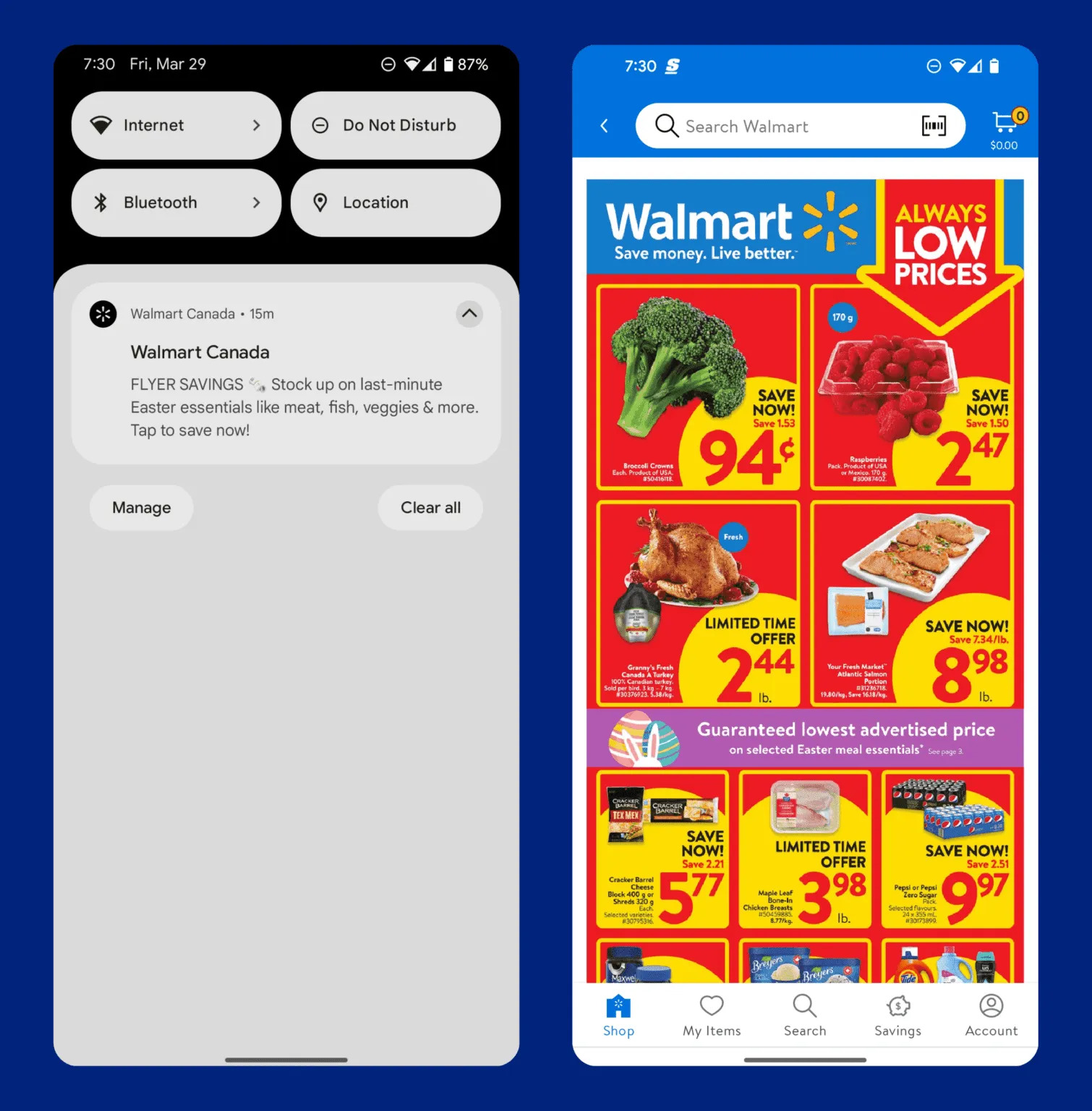
Meanwhile, in media and entertainment, real-time personalization could focus on tailoring notifications based on viewing patterns or wishlists.
Like Google Play Books does here:

In the SaaS context, real-time personalization relies on effective customer data collection and customer segmentation. By analyzing user behavior and creating specific paths for each user persona and segment, you aim to orchestrate a seamless customer journey across different integrated channels.
With real-time personalization, you guarantee:
- Relevant and dynamic content
- Targeted messaging (in your product, in your emails, and your push notifications)
So, in short, real-time personalization allows you to provide continuous value to your (potential) users, starting in the first stages of their user journey.
💡 And, according to consumer surveys, that’s what your (potential) users expect.
B2B customers have high expectations for personalization, with 57% expecting tailored experiences from the very start of the discovery phase. By the time they reach the product trial stage, this expectation rises sharply, with 72% of customers anticipating a fully personalized experience 👇🏻

For B2C customers, personalization expectations are somewhat lower, yet nearly half still expect a high level of customization when engaging with a product or getting support.
No matter the type of product or service you offer or who your audience is, there’s an expectation for personalization at some level.
Yet, before we see some examples for inspiration or go over the steps to help you implement personalization strategies, let’s take a closer look at the mechanics of real-time personalization 🔍
How Real-Time Personalization Works
First things first: real-time personalization relies on data.
➡️ You need a robust approach to collecting, storing, and managing this data, which is often where a Customer Data Platform (CDP) comes in. A CDP aggregates data from all your sources —whether website activity, in-app behavior, or email engagement— into a single view of each customer.
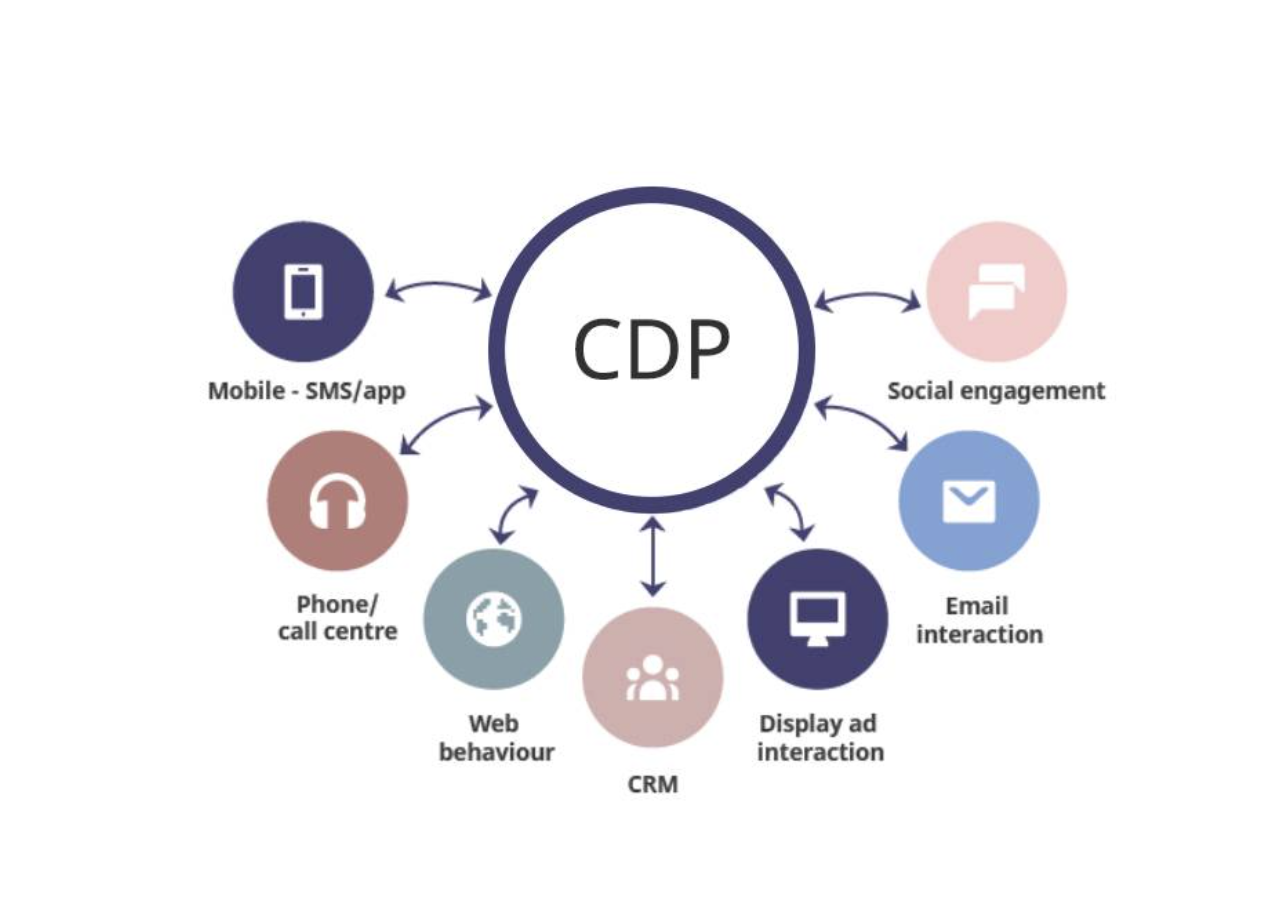
Here’s why it matters: without consolidated data, you’re flying blind.
Imagine trying to recommend a product without knowing a customer’s preferences or purchase history. With a CDP, you get a complete view of your users, helping you identify what they’re interested in and where they are in the customer journey.
More importantly, real-time data allows you to react instantly to user actions, like sending an in-the-moment discount to a customer considering a purchase.
➡️ Nevertheless, collecting real-time data through CDP is just the beginning. If you want to use that data on your website, product, and other touchpoints, you need to integrate it with a Customer Experience Management or Customer Engagement Platform (CEP).

Take this example: A customer adds an item to their cart on your website but doesn’t check out.
With a CEP, you can trigger a timely in-app notification or email reminder encouraging them to complete their purchase. Or, let’s say a user watches a product demo on your website. The CEP can help you automatically serve them special offers in the app the next time they log in.
➡️ Beside CDP and CEP, you can also utilize AI tools and machine learning algorithms to offer hyper-personalization to your customers. Through predictive analytics, these algorithms analyze user behaviors, past purchases, and other interactions to anticipate needs and deliver tailored experiences.
So, in a sense, you know what your users want even before they realize it 🧠

Real-Time Personalization Examples in Action
As we've discussed, there are many ways to apply real-time personalization to your SaaS product.
For example, you can:
- Customize announcements and in-app messages
- Personalize CTAs
- Ask different follow-up questions in your survey
- Tailor onboarding experiences
- Recommend specific features
- Offer context-aware tips or tutorials
- Change your pricing and/or offer promotions
- Provide personalized help center content or FAQs
- Send targeted email campaigns
- Integrate gamification elements based on user engagement levels
- Highlight community feedback or case studies relevant to user interests
Or more!
The sky is the limit with personalization, really 🌤️
Yet, let’s talk about the most popular real-time personalization strategies and see some real-life examples 👇🏻
Providing a specific path according to customers’ choice
Personalization is mostly about creating logic flows.
Based on your existing customer data and behavior analysis, you create different paths for different needs, expectations, and motivations (then use them for your new users).
Yet, in order to create these logic flows and different paths for your users, you first need to map out the user journey and determine your user personas.
Read more on creating user personas here 👈🏻
Back to logic flows.
You can create different logic flows to offer different:
- Onboarding tours,
- Onboarding checklists,
- Feature recommendations and tooltips.
For example, you can ask your users about their profession (or technical background) like this and steer them into specific paths that are suitable for them:

After this welcome survey, let’s say you can:
✅Trigger different onboarding tours
✅Highlight different features on your checklist
✅Provide different tooltips for different use cases and levels of expertise
If you need to know more about your users and their use cases to create specific paths for them, you can conduct more detailed onboarding surveys like this, too:

After this onboarding survey, you can:
✅Create different dashboards and home pages (and showcase the UI with a walkthrough)
✅Promote different premium features and add-ons (and trigger guides showing how to use them)
Triggering a relevant action according to user feedback
How can we talk about logic flows and not mention user feedback surveys?
The first and most straightforward method of personalization based on user feedback is to tailor the follow-up questions in your surveys.
For example, in your NPS survey, you can trigger this question for the detractors:

For the passives, something like this:

And for the promoters, a question like this could work:

Nevertheless, your options are not limited with follow-up questions. You can also trigger guides or redirect users to different URLs based on their feedback.
👉🏻 For example, if a user reports difficulties with a specific feature, you can trigger a guide that explains how to use it step by step or offers tips for maximizing its capabilities. Alternatively, you could redirect them to a dedicated onboarding resource page or a knowledge base for further assistance.
Another method of real-time personalizing the UX based on the input you gathered from the user is to trigger a relevant CTA with relevant messaging (like a “please don’t leave us discount”) after user feedback.
LinkedIn is the best example of this.

When you decide to unsubscribe from LinkedIn Premium, LinekdIn first asks you about your reasons and reminds you of the value you got from the Premium features in a few steps. Yet, if you insist on leaving them even after those value reminders, LinkedIn offers you a discount on the last step of their offboarding survey.
The size and duration of this promo may vary depending on your reasons for leaving and how long you've held your premium account, among other factors.
👉🏻 You can also share your upcoming features and UX improvements if a user is considering leaving due to missing functionalities. Let them know about the enhancements you’re planning and how they’ll address their concerns.
Or, if they're leaving because they find certain features incomplete, take the opportunity to explain your add-on features and how they can enhance their overall experience.
Personalizing the action (follow-up question, guide, or CTA) after user feedback helps you:
✅ Get better and more detailed insights
✅ Provide instant solutions to users’ problems
✅ Offer incentives for your users to stay with your product
✅ Build stronger relationships with users
Promoting new/pro features after drop-offs and incomplete user actions
Yes, you can bring some users who are ready to churn with promos, add-ons, and upcoming feature announcements.
But this is very risky, and most of the time, it’s already too late.
So, you should try to detect the unsatisfied ones before they start feeling like your product can’t meet their needs anymore.
Every drop-off or unfinished action is a sign of a frustrated user who might be on the way out. If you have a new feature or add-on that could help them complete their goal, you should use that moment to announce that feature or promote it.
Like Canva does with this slideout feature promotion:

The slideout modal is triggered when the user adds an image on their design but then deletes it after playing on it a little bit.
So, after a drop-off, we can say.
Clearly, the image the user found elsewhere isn’t quite right, and Canva’s current options for editing it aren’t enough either. The user starts thinking about switching to a more advanced tool —maybe even Adobe Photoshop for its generative capabilities.
Right then, Canva steps in and introduces a new feature that’s exactly what the user needs at that moment!
👉🏻 This could also be a tooltip, offering tips on completing the unfinished action or showing how to use the feature like a pro, motivating the user to finish what they started.
With personalized and contextualized feature promotions, you ensure:
✅ High feature discovery and activation
✅ Relevant and timely messaging
✅ Increased user satisfaction and retention
✅ Reduced drop-off rates
Offering personalized recommendations based on user actions
One of the most common ways to do real-time personalization in e-commerce and shopping sites is by customizing product recommendations.
This is achieved in two main ways:
- The platform analyzes your shopping behavior and suggests products based on your own data.
- It looks at the shopping habits of users with similar interests and patterns, offering recommendations based on their carts and wishlists.
Here’s an example from Amazon:

Nevertheless, these personalized recommendations do not need to be products to buy. In YouTube’s case, they’re videos:

In Spotify’s case, they’re artists, playlists, or songs:

And in Pinterest’s case, they’re pins (photos, videos, and blog posts):

Plus, Pinterest asks the user about their interest areas during the onboarding and updates their home page in real-time in the background, too.
This way, you don’t need to wait for the app to collect extensive user data to offer personalized suggestions —a quick onboarding survey like this can provide enough information for initial real-time personalization 👇🏻

All these recommendations have one common aim: to encourage engagement with the platform, provide even more usage data, and keep the users on the hook.
Okay, maybe more than one, but you get the idea…
Offering relevant suggestions based on product usage data helps you:
✅ Keep your users in the “hook.”
✅ Ensure higher product engagement and adoption.
Applying dynamic pricing on your product
Up until now, we’ve explored in-product personalization strategies, from onboarding all the way to offboarding. Now, let’s look at the kinds of real-time personalization you can offer customers on your website, mainly your pricing page.
Dynamic pricing is a flexible pricing strategy that adjusts prices based on various factors, such as demand, customer behavior, time of purchase, and market conditions. It relies on real-time data analysis, which includes monitoring competitors, tracking demand, and understanding purchasing patterns.
Here’s how dynamic pricing works:

It ensures that you maximize your revenue by allowing each customer to pay what they're willing to pay for the (almost) same product or service. It involves offering different plans tailored to users who need varying features or varying MAU quotas.
By lowering your prices for users who will utilize fewer features or have a lower monthly active usage, you ensure they don’t feel ripped off for services they’re not using. This approach allows you to generate revenue from these users while making them feel valued and satisfied with their subscriptions.
Here’s how UserGuiding offers different pricing tiers based on included features and MAUs:

⚠️ It's vital that your users do not feel wronged when dynamic pricing is applied, especially if they end up paying more compared to other customers.
For instance, offering discounts to students and teachers is generally accepted and appreciated, as it’s seen as a positive move. Or, if you have a transparent feature comparison table explaining why certain plans are more expensive than others, that would work, too.

Failing to convince your users of the fairness of your pricing policy can lead to a significant loss of trust. Therefore, it’s essential to communicate clearly the rationale behind your pricing strategies.
Don’t forget transparency brings a sense of loyalty.
Read more on pricing strategies in SaaS 👈🏻
Higher return on investment
So, yes, investing in real-time personalization can lead to a higher return on investment (ROI).
💡 According to a Forbes article, businesses that excel in personalization can boost their growth rates by 6% to 10%.
💡 Also, according to Comviva’s research, in 2024, real-time personalization is projected to impact over 30% of all revenue across all industries, a substantial increase from 16% in 2020.

The same study highlights that personalization is a powerful tool for building customer loyalty. By reducing customer acquisition and retention costs, personalization strategies can also increase customer lifetime value —forecasted to lower CAC by 28% in 2024.
And now you know how and why that is the case.
How to Implement Real-time Personalization in SaaS in 5 Steps
If you’re convinced about the necessity and power of personalization, it’s time to learn how to offer it right within your product!
Step 1: Gather data and feedback from your customers
Everything starts with user data.
But what kind of data?
Well, in order to offer real-time personalization, you need a mixture of:
- Behavioral data (browsing habits, feature use frequency, etc.)
- Demographic data (profession, age, location, etc.)
- Psychographic data (pain points, desires, goals, needs, values, etc.)
- Brand interaction data (campaign performance and responses, purchase history, etc.)
There are a few methods you can use to collect this kind of data 👇🏻
Use Customer Data Platforms (CDP)
A Customer Data Platform (CDP) brings together user data from all touchpoints. It captures data on behaviors, interactions, and more, creating a complete profile of each customer. With this, you get a clearer, unified view of your users.
✅ With a CDP, you can centralize data from:
- Website/ Mobile App
- Social Media
- Customer Support Channels
- E-commerce Platforms
- Ad Platforms
- CRM Systems
- Email Campaigns
So, yes, CDPs give you that coveted 360° view of your customers and how they interact across platforms. But with all those capabilities, they can come with a steep learning curve. If you're not used to working with data management tools, the setup might feel overwhelming, and having all that data at your fingertips can be as confusing as it is exciting.
Tread carefully as you dip your toes into the CDP ocean 🌊
Here’s an example dashboard from Tealium, one of the most popular CDPs in the market:

Some other popular CDPs on the market include ActionIQ, Oracle Unity, Lytics, and Bloomreach Engagement.
Use Event Tracking Tools
Event tracking lets you see how users interact with your product in real time. You can track specific actions like clicks, feature use, and session times.
Event tracking tools capture data on user actions specifically within your app or website, rather than across multiple platforms or channels like CDPs. This makes event tracking tools highly focused on in-app behavior and on-site interactions.
Some event tracking tools allow you to create heatmaps or conduct sentiment analysis, as well.
Like this heatmap from Hotjar:

✅ The data you collect with event tracking tools shows you:
- Which features users love,
- Where they spend time, and
- When they lose interest.
Event tracking tools offer great opportunities to uncover exactly what's happening on your platform as users interact with it. They give you insight into user flows, drop-off points, and engagement patterns.
✅ With these insights you gathered through event tracking, you can offer:
- Provide support and guidance after abandoned or incomplete actions,
- Tailor your onboarding journeys according to interest areas,
- Offer dynamic messaging that changes according to user interactions and
- Trigger feedback prompts and user surveys after popular drop-off points.
Read more on event tracking tools and their use cases here 👈🏻
Use Feedback Gathering Tools
Sometimes, it’s easier to ask the user about what they like, what they hate, what they don’t quite understand, or what they find frustrating instead of going through all that tracking and data collecting like a detective…
👂🏻 Yes, actions can speak louder than words, but let’s first try to hear the words, shall we?
And for that, all you need is a tool that enables you to create in-app surveys with a few clicks, like UserGuiding!
UserGuiding is a product adoption and user onboarding platform that enables you to create engaging and interactive product experiences, as well as conduct user research with in-app surveys.
🗒️ You wanna conduct:
- An onboarding welcome survey to learn about your users' use cases, goals, and needs?
- An onboarding satisfaction survey to see whether your flows are still relevant and useful for your user segments?
- A new feature reaction survey to detect flaws and bugs that hold users back from adopting it?
- A feature request survey to understand the emerging needs and expectations of your users?
You’re covered with UserGuiding’s in-app surveys:

If you want to learn more about your users and their experience with your product, UserGuiding makes it easy to gather their feedback directly.
All you need to do is choose a template (or start with a blank survey) and create your survey questions one by one:

You can customize your survey logic to trigger different questions based on users' previous answers to previous questions:

Next, you can establish your page targeting and user segmentation strategies, determining which users will see the survey after completing specific actions on designated pages.

And once you’re with the design (fonts, colors, positioning, sizes, etc.) of your survey, too:

You’re good to go live with your survey!
As you’ve also probably noticed, UserGuiding has a very simple, neat and user-friendly UI. So you do not need to have prior knowledge or experience with feedback tools, everything is self-explanatory enough for your to get the gist of it within seconds!
Here’s an example NPS survey created with UserGuiding:

🎁 Start your free trial and create your own in-app surveys with UserGuiding
Step 2: Create customer segments using the insight from data
With your data in place, the next step is to create customer segments based on audience attributes and customer profiles. By grouping users into segments, such as power users, new users, and low-engagement users, you can tailor messaging and experience paths that feel more relevant and engaging.
There are 5 questions you need to ask yourself when creating your segments:
- Who are your users (roles, job title, department, etc.)?
- What do they do (lifecycle state, product activity, etc.)?
- Where are they (location, languages they speak, website or app, etc.)?
- When do they use your product (hour, day, week, quarter, etc.)?
- Why do they use it (objectives, goals, pain points, expected outcomes, etc.)?
When creating these segments, you can consider building user personas, as well.
User personas are detailed profiles that outline different user types’ goals, challenges, and product needs. This can help you create a solid foundation for personalized experiences, as each persona will have a tailored journey through your product based on their unique requirements.
Read more on how to utilize user segmentation for product adoption here 👈🏻
Step 3: Create a customer journey map identifying all interactions
Once you have your segments and personas, it’s time to map out their journeys. Customer journey mapping involves plotting each interaction that users have with your product, from onboarding and support to feature adoption and product updates.
Mapping the journey clarifies which areas to personalize, ensuring users feel recognized and valued at every stage.
For instance, you may identify touchpoints where proactive help would reduce churn or where users could benefit from an automated tip about an underused feature. This blueprint will serve as a foundation for designing an experience that feels intuitive and helpful rather than one-size-fits-all.
Step 4: Design a targeted customer journey aligning with your goals
In the previous step, we focused on observing how users navigate through your product and the actions they take during their journey. This observation helps you understand what happens at different stages of the user experience.
Now, it’s time to shift gears and create your ideal customer journey.
You can start by identifying the specific actions you want users to complete. Think about the key features that demonstrate the value of your product. For example, should users begin with a specific core feature to fully grasp how everything else fits together?
Next, you can consider the educational content that can support their journey. What tutorials, guides, or success stories will help inspire them? This way, you can tailor your communication (like targeted emails or in-app messages) to provide the right information at the right time.
This way, users won’t just passively use your product; they’ll actively engage with it.
–Which will increase their understanding and appreciation of its value.
Each segment or user persona will need a unique journey tailored to their specific needs, so it's important to develop these paths separately rather than trying to create a single ideal journey.
Step 5: Determine the action-oriented specific paths
The beauty of crafting action-oriented paths is that you don’t need to get lost in the complexity of hyper-personalization, intricate integrations, or advanced AI tools.
By using straightforward logic and simple diversifications, you can map out tailored experiences that cater to your users' needs without any technical headaches. This means you can define specific paths based on user behavior and preferences, all while keeping it simple and effective.
Let’s create an imaginary scenario 💭
Onboarding Surveys: You can kick things off with an onboarding survey that dives into users' goals, use cases, and pain points. This insight helps you craft a unique journey for each user.
Here’s an example onboarding survey:

Personalized Onboarding Flows: Imagine creating a checklist that walks users through your product. New users might benefit from a “Getting Started” checklist, while seasoned pros could get an “Advanced Tips” guide. This way, everyone gets the info they need in a way that feels just right for them.
Here’s an example onboarding checklist and guide:
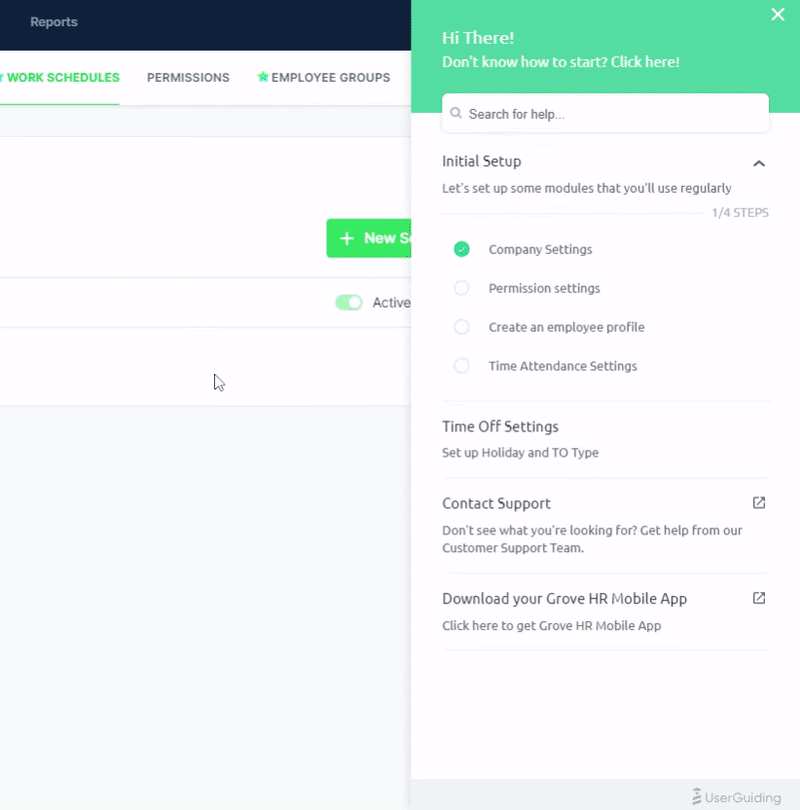
Interactive Tooltips and Hotspots: As users navigate, you can sprinkle in tooltips and hotspots that share insights tailored to their interests.
For example, if a user expresses interest in analytics, a tooltip could give them setting explanations to make things easier for them. Or, if they mention wanting to collaborate with a team, a hotspot could inform them about the new UX improvements of your collaboration tool.
Here’s an example hotspot:
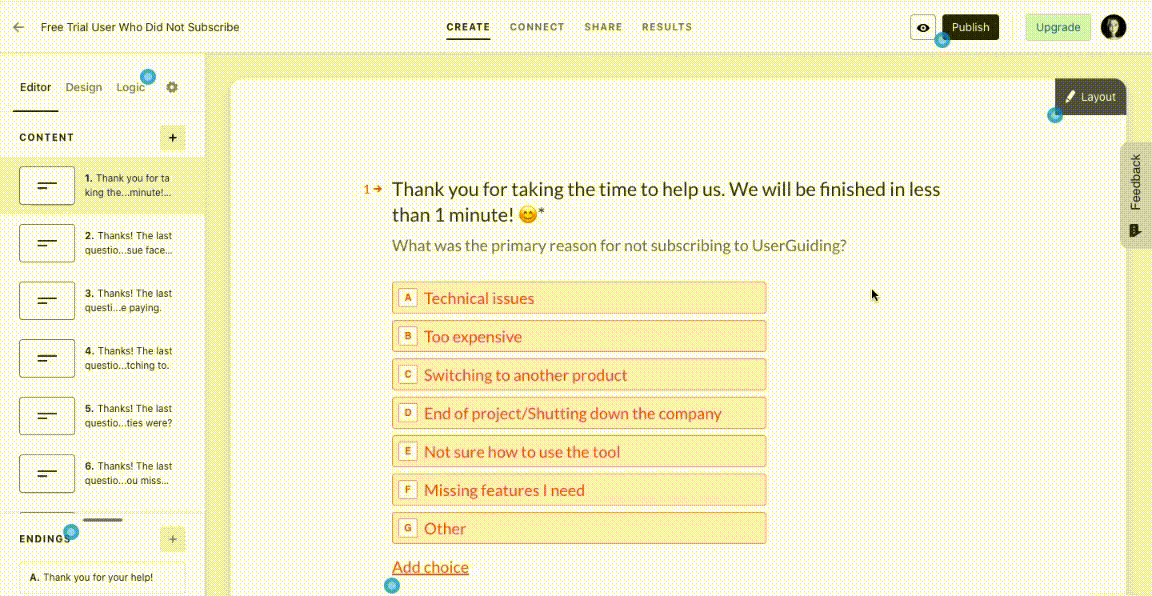
Announcement Modals & Banners: In order to keep users in the loop, you can use announcement banners that highlight new features or updates relevant to their needs. If a user is focused on project management, you can let them know about a new timeline feature, for example.
Here’s an example announcement modal:

The best part?
You don’t need complex CDPs to create these tailored paths. With a product adoption tool like UserGuiding, you can design these experiences yourself!
UserGuiding takes you from user research and feedback collection all the way to crafting personalized product experiences. With its segmentation capabilities, interactive guides, tooltips, hotspots, checklists, and product tours, you can implement everything we discussed without writing a single line of code.
👉🏻 Try UserGuiding yourself 👈🏻
Possible Challenges You Might Face If You’re Not Careful While Real-Time Personalizing
If we go back to Comviva’s research, here are the top 5 challenges faced by companies that put money and effort into personalization:

Data management challenges
Managing and integrating data from various sources can feel overwhelming. Each step (gathering, centralizing, and analyzing) come with its own challanges. For example, you might face difficultieis when collecting data across different platforms, leading to potential gaps in information.
Or, once the data is gathered, you might feel frustrated trying to make sense of it. Inconsistent formats and outdated information can create obstacles, as well.
This complexity can slow down your progress and hinder your ability to deliver a tailored customer experience.
Data privacy challenges
With increasing regulations around data protection, companies need to ensure they handle customer data responsibly. And striking a balance between personalization and privacy can be hard.
💡 According to SmarterHQ’s report, 63% of consumers will stop buying from brands that employ poor personalization tactics, which they find “creepy.” It’s essential to personalize without overstepping privacy boundaries.
When asked what makes a marketing personalization strategy “creepy,” their answers were as follows:

Scalability challenges
As your business grows, scaling your personalization efforts can become complex. What works for a small user base may not translate effectively to a larger audience. You might require more robust systems and strategies.
Let’s say you were relying on one-on-one guidance to provide personalized service through human interaction. However, as you scale and grow your business, you might need to adopt third-party tools and platforms to automate the process.
Omnichannel management and orchestration challenges
Personalization often occurs across multiple platforms and channels simultaneously, including your emails, customer success and support platforms, product interfaces, and website.
This can create a rich, interconnected experience for users.
However, maintaining a consistent experience across all these touchpoints can be quite challenging for you.
Each platform may have its own data sources, user interfaces, and communication styles. And you might not always be able to ensure that your messaging and branding are cohesive across all these platforms.
As a result, inconsistencies in personalization can arise, causing confusion for users. They might get mixed messages or feel like they’re not really connected to your brand.
Wrapping Up…
Personalization isn’t just a passing trend; it’s a powerful force that’s here to stay in the SaaS landscape, consistently reshaping user experiences.
Customers actively seek personalized interactions, and businesses are stepping up to meet that demand.
You should also get started with your personalization efforts or enhance the strategies you already have in place.
In this article, we've covered everything you need to know to make it happen.
So, you got this!
👉🏻 Explore UserGuiding and its capabilities to help you implement effective personalization strategies that engage your customers and drive results!
Frequently Asked Questions
What is dynamic personalization?
Dynamic personalization refers to the practice of tailoring content and experiences for users in real time based on their behaviors, preferences, and interactions. It’s also known as real-time personalization or hyper-personalization. Dynamic personalization includes personalized recommendations, messages, and offers that adapt as users engage with a product or service.
How do you evaluate personalization?
To evaluate personalization, you can use metrics such as engagement rates, conversion rates, and customer satisfaction scores. Analyzing user behavior, tracking performance against defined goals, and collecting feedback is essential. A/B testing different personalization strategies can also provide insights into what resonates best with your audience.
What are the 4 Ds of personalization?
The 4 Ds of personalization are data, decision-making, design, and distribution. Data involves collecting and analyzing customer insights to understand preferences. Decision-making is about using that data to make informed choices for personalization strategies. The design focuses on creating user-friendly interfaces that enhance engagement. And finally, distribution ensures the right messages reach the right users at the right time.

















.svg)
.svg)
.svg)
.svg)
.svg)

.svg)
.svg)












.svg)
.svg)




.png)


